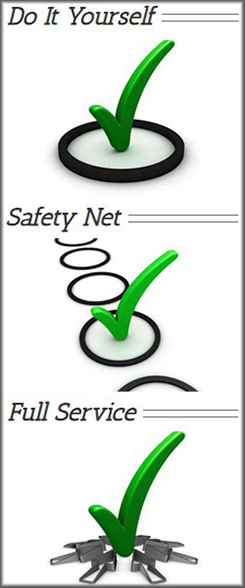Customer Measurement Problem 5
ASSUMING STAYING OR LEAVING HINGES SOLELY ON SATISFACTION
Jump To Page – Intro, 1, 2, 3, 4, 6, 7, 8, 9, 10, 11, 12, Conclusion
 It is well known now that the customer satisfaction perspective, by itself, is not comprehensive enough to use as the ultimate construct in managing customer retention. Many have built the case that satisfaction does not map directly to retention. In fact it can precede defection. Likewise, a dissatisfied customer may continue with a business (e.g., customers of a utility, customers with large investments in equipment, customers in contractual agreements, etc.).
It is well known now that the customer satisfaction perspective, by itself, is not comprehensive enough to use as the ultimate construct in managing customer retention. Many have built the case that satisfaction does not map directly to retention. In fact it can precede defection. Likewise, a dissatisfied customer may continue with a business (e.g., customers of a utility, customers with large investments in equipment, customers in contractual agreements, etc.).
Several problems exist in assuming a linear, symmetric, uni-causal relationship between satisfaction and retention. First, a number of possible asymmetric non-linear patterns of relationship have been proposed and observed, sometimes modified by industry sector. For an example, consider the depiction in Figure 3.
In Figure 3., severe dissatisfaction leads directly to customer loss. Then, there is a zone in which moderate levels of satisfaction contribute modestly to retention. Within that zone, little is gained for incremental gradations of “moderate satisfaction.” Finally, only at the most extreme level of satisfaction (delight?), do we start to see increased association with retention. This is just one example of how the satisfaction-retention connection can work. Sometimes it does not work at all. Sometimes other patterns emerge. The point here is that the oft-assumed satisfaction-retention relationship is not axiomatic. The relationship is not necessarily (a) present, (b) symmetric, or (c) linear.
 The satisfaction-retention relationship also is not uni-causal. Other factors beyond satisfaction surely influence retention. Significant work in the services area has demonstrated that a variety of other constructs play a role in the likelihood to continue doing business with a company – things like value, quality, price, market orientation, service quality, corporate image factors, and so on. Where are these other known drivers of behavior in applied customer satisfaction frameworks? Too often they are missing. What is called for then is a more comprehensive set of constructs in more comprehensive models. Models emphasizing satisfaction alone, quite simply, are misspecified. Other drivers of staying and leaving clearly are missing. Consideration of additional factors influencing customer behavior leads nicely into problem six.
The satisfaction-retention relationship also is not uni-causal. Other factors beyond satisfaction surely influence retention. Significant work in the services area has demonstrated that a variety of other constructs play a role in the likelihood to continue doing business with a company – things like value, quality, price, market orientation, service quality, corporate image factors, and so on. Where are these other known drivers of behavior in applied customer satisfaction frameworks? Too often they are missing. What is called for then is a more comprehensive set of constructs in more comprehensive models. Models emphasizing satisfaction alone, quite simply, are misspecified. Other drivers of staying and leaving clearly are missing. Consideration of additional factors influencing customer behavior leads nicely into problem six.




